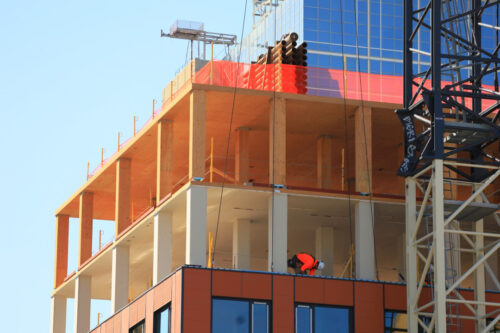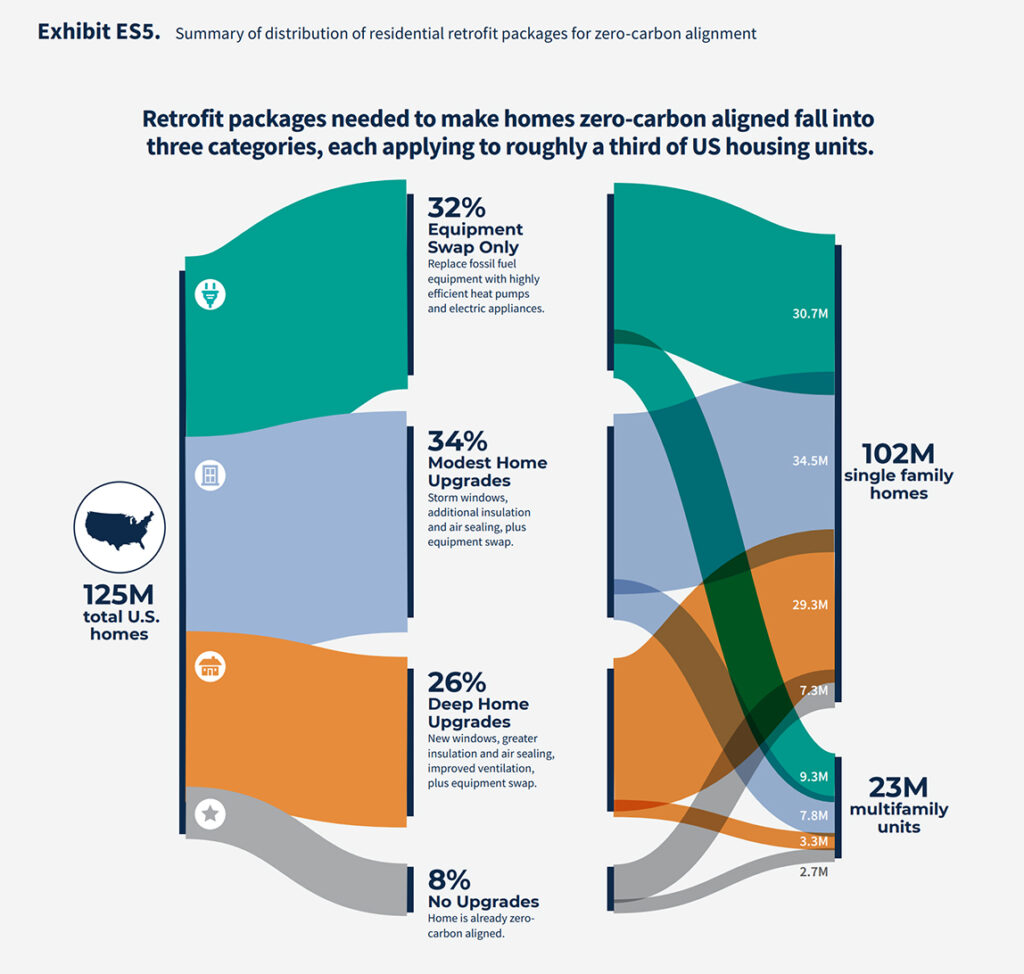
Abundant, Affordable, Climate-friendly Homes: What Part 1 of the National Definition of a Zero Emissions Building Means for Housing
Unpacking the Department of Energy’s long-anticipated Zero Emissions Building definition.
This week, the US Department of Energy (DOE) finalized Part 1 of a national definition of a zero emissions building, focused on operational carbon emissions. The long-anticipated definition includes three key criteria: energy efficiency, no on-site emissions, and all-clean power sources. Buildings following the definition will improve peoples’ health and safety by providing cleaner air to breathe, lower energy costs through efficiency and smart design, and protect the climate by eschewing harmful materials and practices. DOE has indicated that future iterations will aim to address embodied carbon as well.
Announcement celebrated by industry and advocates alike
The announcement has been lauded by high-performance building experts and climate advocates, as it will provide much-needed consistent guidance for real estate leaders, investors, and subnational governments seeking to drive toward a zero-emission building sector by 2050. RMI is encouraged to see that the definition echoes the concept of zero-carbon-aligned buildings from a recent Market Guidance Report from the Advanced Building Construction Collaborative (ABC-C), authored by RMI, VEIC, and three national laboratories (LBNL, NREL, and PNNL).
Advocates also note that the “Part 1” designation of the definition is key. Half of all emissions from new construction between now and 2050 are anticipated to come from embodied, rather than operational, emissions. Only when buildings minimize or negate the climate impact of materials’ manufacture and transportation will they be truly zero emissions.
Zero-emission homes poised to become the norm
The flexibility and simplicity of the definition means that zero operating emissions buildings are economically feasible to build today, especially for new houses and apartments. Two of the three criteria, energy efficiency and zero onsite emissions, can be achieved at or below cost parity with built-to-code, dual-fuel homes today thanks to the low cost of all-electric construction and incentives from the Inflation Reduction Act (IRA). And with 23 states housing over half of the US population already committed to 100 percent clean electricity, today’s homes can either invest in renewable power now or coast toward the goal as the grid grows cleaner.
Meeting the definition could attract investment
The stakes are high, as billions of federal dollars, such as loans from the Greenhouse Gas Reduction Fund (GGRF), condition or prioritize funding on achieving zero operating emissions. Private capital may follow suit as firms seek to catch up on progress toward climate goals, reduce transition risk, or prepare for anticipated climate-related financial disclosure requirements.
Curious how to meet the definition when building or renovating a home? Read on.
How to build a new zero operating emissions home in three easy steps
To meet Part 1 of the national zero emissions building definition, homes must be efficient, all-electric, and clean-energy-powered.
Efficient: A new home must use 10 percent less energy than a similar home built to the latest model code. The three federal efficiency certifications for new homes—ENERGY STAR® for Residential New Construction, ENERGY STAR NextGen, and Zero-Energy Ready Homes (ZERH)—all fulfill this criterion. As we’ve written previously, 45L tax incentives make these certifications a good investment for builders in many states. With smart choices like all-electric construction and use of renewable energy, these new homes could also meet the zero emissions definition.
All-electric: To satisfy the zero on-site emissions criterion, buildings must have all-electric appliances and equipment, like induction stoves for cooking and heat pumps for space and water heating, cooling, and clothes drying.
Last year, heat pumps outpaced gas furnaces in sales, a trend we expect will continue as households transition to cleaner, safer appliances. IRA-funded Home Energy Rebates and forthcoming financing from the GGRF will make these high-performance technologies even more widely and equitably available.
Clean energy-powered: The clean energy criterion can be met with any combination of on-site renewable electricity, like solar panels installed on a building’s roof, or off-site sources such as community solar or certified zero-emission electricity tariffs.
High-performance building leaders show the way
Third-party certifications, such as those provided by the U.S. Green Building Council, the International Living Futures Institute (ILFI), Phius, and Enterprise Community Partners, are also often incentivized at the state, local, or utility level. Two — Phius ZERO and ILFI Zero Carbon — met the definition before it was announced, and others are expected to follow.
Retrofit to zero
Most of today’s buildings will still be operating in 2050, and today, fewer than 1% of buildings are retrofitted every year. That rate must more than triple to meet a net-zero-by-2050 target.
Efficiency is the toughest criterion for existing buildings. Reducing air leakage and heat loss to at-code levels is often cost prohibitive. Because of this, the definition allows retrofits to meet the efficiency criterion by hitting an ENERGY STAR score of 75 or a site energy use intensity target. Both targets will ensure compliant buildings are among the most efficient buildings of their kind today.
Existing homes vary widely when it comes to necessary retrofits. According to the recent Market Guidance Report from ABC-C, about one in three homes can reach zero-carbon-alignment with only an equipment swap-out. Most of the rest need envelope upgrades and other more major improvements. Rebates, credits, and low-cost financing will be key to fund these upgrades and make them attractive to home and building owners.
The work is cut out
Reaching a zero-emission building sector is the work of a lifetime: our lifetime. The work we do now to make our buildings more climate friendly will have a positive impact on our society today and on future generations. With Part 1 of the national definition in hand, the support of countless incentives and finance initiatives, and just over 25 years until 2050, our direction is clear. Let’s get it done.
